

 A gloomy spring… Wild or cultured?
A gloomy spring… Wild or cultured?
This month we give you quite a bit of reading and also a lot of videos. We have published several interesting (?) articles that you can read about in the Brief, plus a whole series of videos.
By the way, we have discovered that there are some unexpected people who read what we are writing. BKWine Magazine is occasionally quoted in the newsletters from, for example, Wine Business Monthly in California and the International Organization of Vine and Wine (OIV). That is great and makes us happy!
The spring has otherwise been gloomy in many places in the vineyards around Europe. It is above all the frost that has hit hard across almost all of Europe. France, Italy, Germany, Austria and even Spain have had so severe frosts that vineyards have been destroyed. Some winemakers have frost damage that reaches 80% or more of the vineyards. Destruction of almost all the year’s harvest. Others have been spared. It has often been awful to look at the vineyards on some of our wine tours this spring. More on the frost in the Brief.
There is much talk about “natural” yeast nowadays. Often “natural” yeast is put forward as something that gives the wine more character, or simply better. Actually, all yeast is “natural” and you should not think that it is anything dangerous, suspicious or unhealthy to use “cultured” yeast. All cultured yeast comes from “wild” yeast, you simply select yeast strains that you feel are best and propagate them. Then it becomes “cultured” or “added” yeast. This is a topic that is shrouded in a lot of myths and misconceptions in the wine world.
I heard for example some time ago a person in the industry (an MW actually) who asked a winemaker who used added (cultured) yeast, “Why don’t you use ‘natural’ yeast? Half of all winemakers do.” I think that’s not quite the case actually.
When I was in Cyprus recently in connection with a wine competition I had the opportunity to discuss this with a consultant oenologist who participated in the jury. His estimate was that at least 90% of all wine in the world is made with cultured yeast. It is difficult to find exact numbers but his guess is fairly similar to my own estimation.
I would venture to guess that most of the world’s “great” wines are made with cultured yeast, but some are of course made with the “natural” or “wild” yeast.
As in most things in wine it is not black and white. There are advantages and disadvantages with “natural” yeast as well as with “cultured” or “added” yeast.
If you have a long summer in front of you, I recommend that you read a good book. If you have had enough of detective novels I can suggest a good wine book. (For example ours on organic, biodynamic and natural wines.)
Enjoy the Brief.
Britt & Per
PS: Recommend to your friends to read the Brief !
– – – – –
What’s on at BKWine Tours
Autumn / fall 2017
- Bordeaux, September 27 – October 1
- Piedmont, wine and truffles, October 18-22
- Douro Valley, Portugal, October 18-22
- Alentejo and Setubal, October 25-29
Winter 2018
- Chile and Argentina, January 27 – February 11, 2018
- South Africa, February 23 – March 5, 2018 (with possible safari and golf add-on)
For more information please contact us on email or on phone (we’re on French time), or go to our wine travel site on www.bkwinetours.com!
We also make custom designed wine tours – on-demand tours for you and a group of friends, for your company (maybe to scout new winegrowers?), for a special event… We can combine winery visits and wine touring with other activities: gastronomic workshops, visit to an oyster farm, truffles hunting, cheese making, and more. More info on the custom designed and bespoke BKWine wine tours and travel here!
Read our book(s)
We have written several wine books, nine at the last count. One of them has been translated to English; the others are (so far) only available in Swedish. This is the one that is available in English: Biodynamic, Organic and Natural Winemaking, Sustainable Viticulture and Viniculture
All our books are on wine, but on different subjects: wines of the Languedoc, wine growing and wine making, the wines of France, Tuscany, Bordeaux, Piedmont, Burgundy, Champagne. Several have won prestigeous prizes and awards. Read more on our wine books.
From the World of Wine
In Brief
In short, news and stuff from the world of wine.
The worst spring frost in a very long time
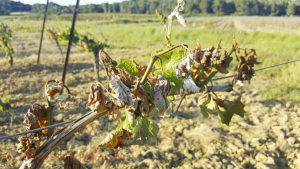 It has been a cold spring throughout Europe. So cold that frost has caused damage in most European wine countries, in the north as well as in the south. For many wine growers, this is the worst spring frost they have ever experienced. But frost, like hail, is very local. During our trips in April and May we have encountered those who suffered damages in up to 70% of their vineyards and those who have not suffered at all.
It has been a cold spring throughout Europe. So cold that frost has caused damage in most European wine countries, in the north as well as in the south. For many wine growers, this is the worst spring frost they have ever experienced. But frost, like hail, is very local. During our trips in April and May we have encountered those who suffered damages in up to 70% of their vineyards and those who have not suffered at all.
It was a sad sight to see some vineyards. One day they were beautifully green and lush, next day every leaf was brown and withered. During sleepless nights, the wine growers did of course what they could to protect, at least their most valuable vineyards. In France, it is mainly the northern regions that have the equipment to protect. Water is sprayed; helicopters are used to circulate the air, candles and oil-burning heaters warm up the vines. Sometimes it helps, sometimes not.
Photo: vine hit by the frost. Here you can see a video of a vine that has been frost struck.
American wineries sell 60% direct to consumers
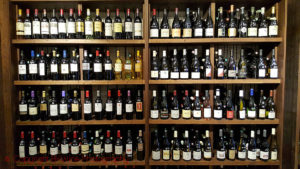 60% of sales is “direct to consumers” (DtC) for an average American winery, according to a recent report by the Silicon Valley Bank. Rob McMillan of the Premium Wine Division of the bank says that direct sales have grown dramatically over the last five years. This is an astonishingly high number. In Europe, only wineries in areas with a very high number of tourists, like Provence, have similar numbers (according to my anecdotal experience). Direct to consumer sales give the wineries various advantages, e.g. better margins (no middlemen) as well as a direct contact with the consumers. Read more on this report from SVB on wine.
60% of sales is “direct to consumers” (DtC) for an average American winery, according to a recent report by the Silicon Valley Bank. Rob McMillan of the Premium Wine Division of the bank says that direct sales have grown dramatically over the last five years. This is an astonishingly high number. In Europe, only wineries in areas with a very high number of tourists, like Provence, have similar numbers (according to my anecdotal experience). Direct to consumer sales give the wineries various advantages, e.g. better margins (no middlemen) as well as a direct contact with the consumers. Read more on this report from SVB on wine.
New type of frost control in Burgundy
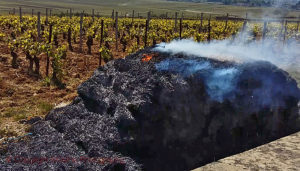 In Côte d’Or in Burgundy this year, for the first time, a new method of frost control has been used. The burning of straw bales. Many of them. Maurice Chapuis at Domaine Chapuis in Aloxe-Corton explains why: “They are setting fire to the straw bales at around four o’clock in the morning. They do it not so much for the sake of heating the vineyard. It is for the smoke. Because the smoke from the fire forms a cloud over the vineyard, thus softening the sun’s rays as it rises. The first rays of the sunshine can burn the buds that are frozen during the night. ”
In Côte d’Or in Burgundy this year, for the first time, a new method of frost control has been used. The burning of straw bales. Many of them. Maurice Chapuis at Domaine Chapuis in Aloxe-Corton explains why: “They are setting fire to the straw bales at around four o’clock in the morning. They do it not so much for the sake of heating the vineyard. It is for the smoke. Because the smoke from the fire forms a cloud over the vineyard, thus softening the sun’s rays as it rises. The first rays of the sunshine can burn the buds that are frozen during the night. ”
In the last days of April we saw a huge amount of straw bales placed around the vineyards of Côte d’Or. For a couple of nights, tons of bales were burned and the smoke was noticeable all the way into Beaune where we stayed. Did it help? Yes, it did, at least in part. Here you can see a video of frost fighting with hay bales.
Extreme weather and natural disasters in the vineyards around the world
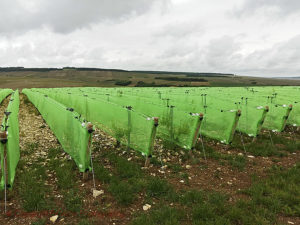 Frost has been a serious problem throughout Europe this spring. But frost is not the only climate phenomenon that a vineyard can encounter. No vineyard is completely sheltered from extreme weather or natural disasters. Cold, frost, hail, fires and floods due to heavy rainfall are the most common weather problems. Burgundy, Piedmont and Mendoza in Argentina are three wine regions that often suffer from hail. In Argentina it is common with hail nets and now it is also starting to be used in Burgundy. We saw it for the first time in Chablis now in May.
Frost has been a serious problem throughout Europe this spring. But frost is not the only climate phenomenon that a vineyard can encounter. No vineyard is completely sheltered from extreme weather or natural disasters. Cold, frost, hail, fires and floods due to heavy rainfall are the most common weather problems. Burgundy, Piedmont and Mendoza in Argentina are three wine regions that often suffer from hail. In Argentina it is common with hail nets and now it is also starting to be used in Burgundy. We saw it for the first time in Chablis now in May.
According to the site www.winerisk.com, the biggest threats to the vineyards in the five largest wine countries are as follows:
- Italy: hail, frost, earthquake (in smaller scale volcanic eruptions and flooding)
- France: frost, hail, storm
- Spain: hail, frost, heat wave
- USA: frost, earthquake, storm
- Australia: frost, hail, fires
Read more on these threats: vitisphere.com. Photo: hail nets in Burgundy.
Oak ageing yes, but discrete flavours please
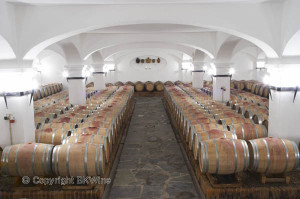 Oak ageing is an important ingredient in the production of a quality wine, this all wine lovers are well aware of. Important yes, but more and more winemakers are trying to make the oak as discreet as possible in their wines. The oak ageing is needed, they say, to stabilize the wine and to give it a special mouth feeling. But they do not want too much oak aromas anymore, be it vanilla, coconut, coffee or chocolate.
Oak ageing is an important ingredient in the production of a quality wine, this all wine lovers are well aware of. Important yes, but more and more winemakers are trying to make the oak as discreet as possible in their wines. The oak ageing is needed, they say, to stabilize the wine and to give it a special mouth feeling. But they do not want too much oak aromas anymore, be it vanilla, coconut, coffee or chocolate.
The wine producers spend a lot of time and effort (and money) on finding coopers that understand their wines. Often they work with several different coopers because everyone works differently and blending different barrels give a better balance to the wine. Read more about what different winemakers, including Megan Schofield at the Robert Mondavi Winery, think about oak ageing on winesandvines.com.
Natural cork is doing very well these days
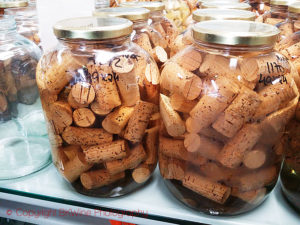 An article about how natural cork has made a comeback in recent years made me look for some interesting cork statistics from Apcor, the association of Portugal’s cork industry. 34% of the world’s cork forests are found in Portugal. That means 736,000 hectares in Portugal of a total of over 2 million hectares in the world (i.e. in the western Mediterranean countries). Portugal has 49% of the world’s cork production. 70% of the cork harvested is used in the wine industry. The rest is used primarily in the construction industry.
An article about how natural cork has made a comeback in recent years made me look for some interesting cork statistics from Apcor, the association of Portugal’s cork industry. 34% of the world’s cork forests are found in Portugal. That means 736,000 hectares in Portugal of a total of over 2 million hectares in the world (i.e. in the western Mediterranean countries). Portugal has 49% of the world’s cork production. 70% of the cork harvested is used in the wine industry. The rest is used primarily in the construction industry.
The cork oak is the only existing tree whose bark is growing back again after harvesting. A cork oak can be 200 years old and sometimes even older. You can harvest the bark for the first time when the tree is around 20 years and then every nine years. No trees need to be chopped down for us to get natural cork for our wines. Read more on cork statistics apcor.pt and on the renaissance of cork on the market and in quality: reuters.com.
Alentejo in Portugal is the region where you have most of the oak forests. It is also the biggest wine region. Travel on a wine tour to Alentejo in October with BKWine. Your best guide to the wine world.
Indigena Garnacha 2012, Parès Balta, Penedès, Catalonia, Spain | Britt’s Wine of the Month
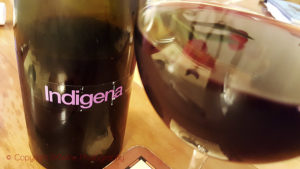 One of our favourites in Penedès is Parès Balta, an organic and biodynamic estate (certified Demeter), run by the brothers Joan and Josep Cusiné. But the winemakers are their wives, Elena Jiménez and Marta Casas. I fell for this wine, Indigena Garnacha 2012, immediately. It is well built, quite powerful, but balanced and even with some elegant. Deliciously juicy fruit. A really well made garnacha (grenache in Spanish).
One of our favourites in Penedès is Parès Balta, an organic and biodynamic estate (certified Demeter), run by the brothers Joan and Josep Cusiné. But the winemakers are their wives, Elena Jiménez and Marta Casas. I fell for this wine, Indigena Garnacha 2012, immediately. It is well built, quite powerful, but balanced and even with some elegant. Deliciously juicy fruit. A really well made garnacha (grenache in Spanish).
The grapes come from a vineyard called Finca Les Torres, located high up, 616 meters above sea level, which probably explains the elegance of the wine. Fermentation is at cool temperature, 20 degrees, for four weeks. The wine has been aged for 5 months in new and slightly older French oak barrels. Read more on the producer: paresbalta.com
How much does a vineyard cost in France?
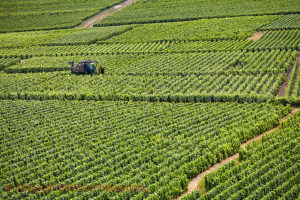 If you are thinking of becoming a wine grower in France, here are some important figures just announced by SAFER, a government organization. In 2016, the average price for an AOP vineyard was 140,600 euro per hectare. The figure shows no major change since the year before. However, one change has occurred. The prices have gone up for AOP vineyards outside of Champagne and gone down for Champagne vineyards. In Champagne, you had to pay a little over 1.1 million euros in 2016 for one hectare, a decrease of 2.6%. The average price of one hectare of AOP outside of Champagne was 66,500 euros.
If you are thinking of becoming a wine grower in France, here are some important figures just announced by SAFER, a government organization. In 2016, the average price for an AOP vineyard was 140,600 euro per hectare. The figure shows no major change since the year before. However, one change has occurred. The prices have gone up for AOP vineyards outside of Champagne and gone down for Champagne vineyards. In Champagne, you had to pay a little over 1.1 million euros in 2016 for one hectare, a decrease of 2.6%. The average price of one hectare of AOP outside of Champagne was 66,500 euros.
If you can live with owning a vineyard that is not an AOP, you will spend much less money. The average price is 13,400 euro per hectare. Comparatively cheap in other words. And because these vineyards are often located in southern France, you will get the sun as a bonus. Read more vitisphere.com
New wine videos
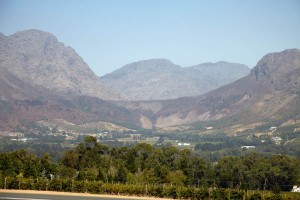 We have published quite a few wine videos lately. You can for example watch a whole series of videos with the winemaker at Glenwood Vineyards, DP Burger, in Franschhoek:
We have published quite a few wine videos lately. You can for example watch a whole series of videos with the winemaker at Glenwood Vineyards, DP Burger, in Franschhoek:
- An introduction to Glenwood Vineyard in Franschhoek with DP Burger
- When to pick the grapes?
- A visit to Glenwood Vineyards
And several more on their different wines (including one with noble rot!) on BKWine’s YouTube channel.
Also a few videos on the Newton Johnson Family Vineyards, one of the now famous ones down in cool-climate Walker Bay:
Plus some more on the YouTube channel.
Why not join us on the next wine tour to South Africa and discover the wines there yourself?
And a video with something different: a press conference on Pic Saint Loup in Languedoc.
Take a look at BKWine’s YouTube channel for much more.
Features
Features that we have published during the past month, with lots of reading for you.
Stony soil and lots of sun = rare Chateauneuf-du-Pape blanc | Britt on Forbes
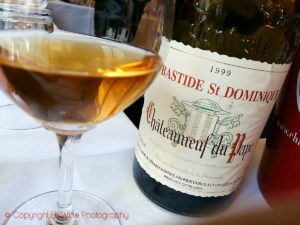 “White Châteauneuf-du-Pape is one of the rarest and most prestigious wines in France. For most people Châteauneuf-du-Pape in the southern Rhône Valley means red wine. This is understandable because only 7% of the wines are white. But these whites are well worth seeking out. They are delicious and some of France’s most full-bodied and rich whites. They also age beautifully. Because of their intensity and body they are wonderful with food and you can pair them with not only fish (preferably grilled or with a creamy sauce) but also with duck breast and all kinds of white meat.”
“White Châteauneuf-du-Pape is one of the rarest and most prestigious wines in France. For most people Châteauneuf-du-Pape in the southern Rhône Valley means red wine. This is understandable because only 7% of the wines are white. But these whites are well worth seeking out. They are delicious and some of France’s most full-bodied and rich whites. They also age beautifully. Because of their intensity and body they are wonderful with food and you can pair them with not only fish (preferably grilled or with a creamy sauce) but also with duck breast and all kinds of white meat.”
Read more on Britt’s article on BKWine Magazine, originally published on Forbes: Stony soil and lots of sun = rare Chateauneuf-du-Pape blanc | Britt on Forbes.
Excellent Riesling from Rheingau – but not only!
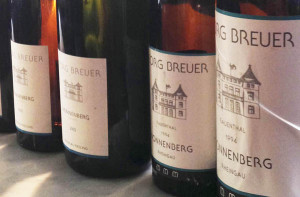 “Rheingau producer Georg Breuer has been an established name for the Swedish wine market since a long time, and a very reliable source for dry German riesling in the top class. Theresa Breuer, that runs the company since many years, visited Sweden to present a new vintage. This time the tasting included the top wines from the 2015 vintage, and some entry wines from 2016. 2015 has already proved to be a great vintage for German riesling – on the dry and sweet side. What distinguishes the vintage is good maturation of the grapes and concentration in combination with good acidity levels. It provides balance and freshness with an appealing purity and elegance. Breuer’s wines did indeed confirm this statement.”
“Rheingau producer Georg Breuer has been an established name for the Swedish wine market since a long time, and a very reliable source for dry German riesling in the top class. Theresa Breuer, that runs the company since many years, visited Sweden to present a new vintage. This time the tasting included the top wines from the 2015 vintage, and some entry wines from 2016. 2015 has already proved to be a great vintage for German riesling – on the dry and sweet side. What distinguishes the vintage is good maturation of the grapes and concentration in combination with good acidity levels. It provides balance and freshness with an appealing purity and elegance. Breuer’s wines did indeed confirm this statement.”
Read more in Thomas Eriksson’s article on BKWine Magazine: Excellent Riesling from Rheingau – but not only!
Tradition and innovation in Ribeira Sacra with Dominio do Bibei
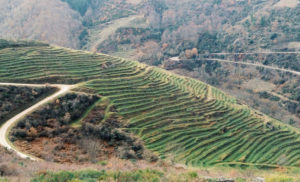 Ribeira Sacra, which translated means the sacred river valley, is located in southern Galicia near the border to Portugal along the rivers Miño and Sil. Dominio do Bibei is a very young producer who started in 2002. It has a modern cellar, built in a way that it integrates as much as possible into the environment to avoid affecting the surroundings. Like all producers in the area they only grow local grape varieties.
Ribeira Sacra, which translated means the sacred river valley, is located in southern Galicia near the border to Portugal along the rivers Miño and Sil. Dominio do Bibei is a very young producer who started in 2002. It has a modern cellar, built in a way that it integrates as much as possible into the environment to avoid affecting the surroundings. Like all producers in the area they only grow local grape varieties.
Read more on Dominio de Bibei in Peter Cronström’s article on BKWine Magazine: Tradition and innovation in Ribeira Sacra with Dominio do Bibei.
Grillo jumps higher in Sicily!
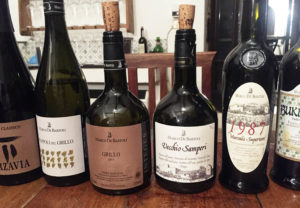 In this case, grillo is neither an Italian politician nor a grasshopper, but a grape from Sicily. From being one of the ingredients in Marsala producers are moving towards a new style of grillo. Come along to the western part of Sicily, where grillo tries to jump higher on its own. Grillo´s fate has just like a grasshopper jumped both up and down. After phylloxera´s rampage in Sicily in the early 1900s, grillo was planted around the towns of Marsala and Trapani. The last twenty years, however, grillo has returned. Since year 2000, the cultivation of grillo has doubled in Sicily.
In this case, grillo is neither an Italian politician nor a grasshopper, but a grape from Sicily. From being one of the ingredients in Marsala producers are moving towards a new style of grillo. Come along to the western part of Sicily, where grillo tries to jump higher on its own. Grillo´s fate has just like a grasshopper jumped both up and down. After phylloxera´s rampage in Sicily in the early 1900s, grillo was planted around the towns of Marsala and Trapani. The last twenty years, however, grillo has returned. Since year 2000, the cultivation of grillo has doubled in Sicily.
BKWine Magazine’s Åsa Johansson tells the story of the grape: Grillo jumps higher in Sicily!
Tasting En primeur: Château Bourdieu Absolu 2016
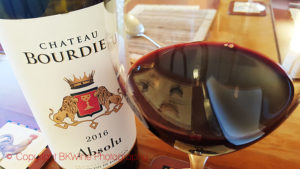 Muhammad and the mountain? The primeur tastings in Bordeaux take place every year in early April. We have not been there this year but we did a mini-primeur tasting at home with one wine the other day. I tasted the wine blind. The colour was dark, really dark with a purple rim. The wine looked really young. It tasted like a Bordeaux so that was my guess, a young Bordeaux (well, to be honest, that was my second guess, my first was Cahors). That it was in fact a 2016, I could not imagine.
Muhammad and the mountain? The primeur tastings in Bordeaux take place every year in early April. We have not been there this year but we did a mini-primeur tasting at home with one wine the other day. I tasted the wine blind. The colour was dark, really dark with a purple rim. The wine looked really young. It tasted like a Bordeaux so that was my guess, a young Bordeaux (well, to be honest, that was my second guess, my first was Cahors). That it was in fact a 2016, I could not imagine.
Read more on this delicious primeur in Britt’s article on BKWine Magazine: Tasting En primeur: Château Bourdieu Absolu 2016.
Does port need a boost?
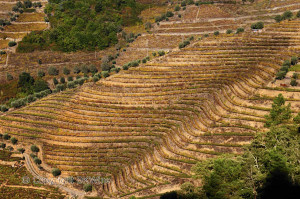 The answer is probably yes. Many sweet wines are struggling on the market today. (Excepting of course those table wines that are sold as “dry” but which contain a substantial amount of sugar, sometimes well above 10 grams per litre.) Port is one of the great classic wines, one of the first wines in history to gain an international reputation, and one of the few wine regions that I could find a good selection of in Sweden when I started with wine in the late 70s (believe it or not). Maybe port needs to become more trendy and modern? Maybe there should be a white version? Maybe they should launch port rosé to ride the rosé wave? Maybe port can be launched as a drink mixer?
The answer is probably yes. Many sweet wines are struggling on the market today. (Excepting of course those table wines that are sold as “dry” but which contain a substantial amount of sugar, sometimes well above 10 grams per litre.) Port is one of the great classic wines, one of the first wines in history to gain an international reputation, and one of the few wine regions that I could find a good selection of in Sweden when I started with wine in the late 70s (believe it or not). Maybe port needs to become more trendy and modern? Maybe there should be a white version? Maybe they should launch port rosé to ride the rosé wave? Maybe port can be launched as a drink mixer?
Read more on this and on the sommelier competition Master of Port in Per’s article on BKWine Magazine: Does port need a boost?
Top ten in wine book on the internet
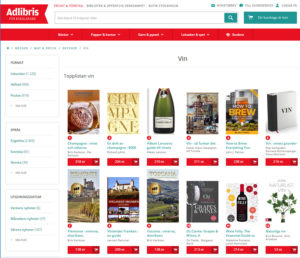 It’s fun with top lists. Especially when you are in the first place! I just happened to look at AdLibris’s (a leading internet book seller in Sweden) list of wine books. Our new book on Champagne is in the first place. Another book about Champagne is in second place, which underlines the popularity of bubble wine in Sweden.
It’s fun with top lists. Especially when you are in the first place! I just happened to look at AdLibris’s (a leading internet book seller in Sweden) list of wine books. Our new book on Champagne is in the first place. Another book about Champagne is in second place, which underlines the popularity of bubble wine in Sweden.
It is quite interesting to take a closer look at the ranking. Perhaps it can tell you a few things about which wines are popular on the market. One of our “regional” wine books was the second-most popular among our books. Have a guess which one it was. Bordeaux? Burgundy? Piedmont? Tuscany? Or all of France? You can find the answer in the article on BKWine Magazine: Top ten wine books: Top ranking on the internet.
Campi Flegrei, vineyards and volcanoes outside of Naples
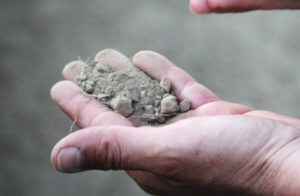 “’Be careful, you can burn yourself,’ says Gerardo Vernazzaro. I stand on a crater overlooking the sea. From the ground, sulfur smoke rises into the air. The name Campi Flegrei means just burning fields. But I did not think the name was literally true. The area’s 90 craters have all had an outbreak sometime in the past 37,000 years. What is beneath the soil is without exaggerating a ticking bomb. -Now, you can easily understand our wines, says Gerardo Vernazzaro, pointing at the sulfur smoke rising from the ground. Together with his wife Emanuela he runs the winery Cantine Astroni.”
“’Be careful, you can burn yourself,’ says Gerardo Vernazzaro. I stand on a crater overlooking the sea. From the ground, sulfur smoke rises into the air. The name Campi Flegrei means just burning fields. But I did not think the name was literally true. The area’s 90 craters have all had an outbreak sometime in the past 37,000 years. What is beneath the soil is without exaggerating a ticking bomb. -Now, you can easily understand our wines, says Gerardo Vernazzaro, pointing at the sulfur smoke rising from the ground. Together with his wife Emanuela he runs the winery Cantine Astroni.”
Read more on this strange wine region in Italy in Asa Johansson’s article on BKWine Magazine: Campi Flegrei, vineyards and volcanoes outside of Naples.
South Africa’s wine rebellion | Per on Forbes
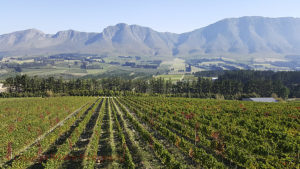 Do you think South Africa is a country that is good at making bulk wines, but that when it comes to quality and personality falls short? Then it’s time to wake up. Now! You are missing a lot of exciting and very original wines. Today there are plenty of exciting wines of very good quality from South Africa. If you know where to look! Often it is from small producers outside the most famous wine regions, ie usually not from Stellenbosch and Franschhoek. Of course they make excellent wines even in those districts today, but if you are newcomer and do not have a lot of money, it’s cheaper to settle in lesser-known areas, Swartland, Elgin, Walker Bay, and others.
Do you think South Africa is a country that is good at making bulk wines, but that when it comes to quality and personality falls short? Then it’s time to wake up. Now! You are missing a lot of exciting and very original wines. Today there are plenty of exciting wines of very good quality from South Africa. If you know where to look! Often it is from small producers outside the most famous wine regions, ie usually not from Stellenbosch and Franschhoek. Of course they make excellent wines even in those districts today, but if you are newcomer and do not have a lot of money, it’s cheaper to settle in lesser-known areas, Swartland, Elgin, Walker Bay, and others.
Read the interview with the new importer The Wine Rebels on South Africa’s rebellious wines in Per’s article on BKWine Magazine, originally published on Forbes: South Africa’s wine rebellion | Per on Forbes.
The best way to experience South Africa’s brilliant new wines is to go there, on a wine tour to South Africa with BKWine. Your best guide in the vineyards.
Arinzano, a rising star in northern Spain
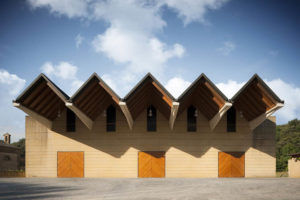 “Sometimes a winery doesn’t just surprise you – it knocks you on your palate. I discovered such a winery by happy accident while tasting wines from another country, Achaval-Ferrer of Argentina. Those wines lassoed me with their verve, and vibrancy. Turns out the same team, part of the Stoli Group empire, purchased an artisan winery in Spain in 2015. Today we talk to CEO and wine maker Manuel Louzada about his Navarra venture Arínzano, the first Vino de Pago designated winery in Northern Spain.”
“Sometimes a winery doesn’t just surprise you – it knocks you on your palate. I discovered such a winery by happy accident while tasting wines from another country, Achaval-Ferrer of Argentina. Those wines lassoed me with their verve, and vibrancy. Turns out the same team, part of the Stoli Group empire, purchased an artisan winery in Spain in 2015. Today we talk to CEO and wine maker Manuel Louzada about his Navarra venture Arínzano, the first Vino de Pago designated winery in Northern Spain.”
Read the full interview with this exciting and ambitious winemaker in LM Archer’s article on BKWine Magazine: Arinzano, a rising star in northern Spain.
The Crazy Swedish Wine Project, The Greek, The German, And The Italian
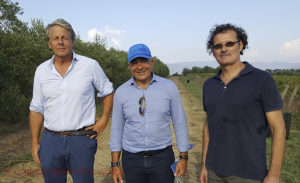 “An Italian, a German and a Greek sit in a wine bar and have tasted a few bottles. And one more glass of wine goes down. ‘Let’s do something crazy,’ says the Greek. ‘Let’s go to Tuscany and harvest some syrah grapes, put them on a truck, drive them 1200 miles to the north, to Sweden (!), and make Italian wine by the Baltic Sea’.” It probably didn’t really happen quite like that, but it could perhaps have happened. But the truth is not very far away from wine bar the story. That, at least, is what a project started by a leading wine importer, Oenoforos, is about.
“An Italian, a German and a Greek sit in a wine bar and have tasted a few bottles. And one more glass of wine goes down. ‘Let’s do something crazy,’ says the Greek. ‘Let’s go to Tuscany and harvest some syrah grapes, put them on a truck, drive them 1200 miles to the north, to Sweden (!), and make Italian wine by the Baltic Sea’.” It probably didn’t really happen quite like that, but it could perhaps have happened. But the truth is not very far away from wine bar the story. That, at least, is what a project started by a leading wine importer, Oenoforos, is about.
Read more on this curious project of picking grapes in Tuscany and vinifying them in Sweden in Per’s article on BKWine Magazine, originally published on Forbes: A Swedish winery? Making Tuscan wine? Yes, indeed! | Per on Forbes. There you can also watch video interviews with the Greek, the German, and the Italian!
It can also be exciting to taste the Tuscan wines and food on a wine tour to Tuscany with BKWine.
Domaine Clos Saint Joseph in the easternmost part of Côtes de Provence
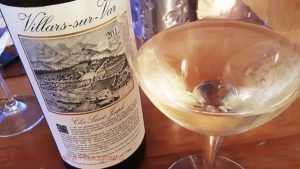 50 kilometres north of Nice is a small town called Villars-sur-Var. We are quite far away from the wine regions. Closer to Nice is the appellation Bellet and further west is the Côtes de Provence. But Villars-sur-Var also has vineyards. One of the few wine growers here is Roch Sassi. His small domain of 4 hectares is called Clos Saint Joseph. His wines are a part of the Côtes de Provence appellation despite the secluded location. Still, quite a few tourists and Nice inhabitants find their way up here to buy his wines. The rumour has spread that there is an ambitious wine-grower in Villars-sur-var.
50 kilometres north of Nice is a small town called Villars-sur-Var. We are quite far away from the wine regions. Closer to Nice is the appellation Bellet and further west is the Côtes de Provence. But Villars-sur-Var also has vineyards. One of the few wine growers here is Roch Sassi. His small domain of 4 hectares is called Clos Saint Joseph. His wines are a part of the Côtes de Provence appellation despite the secluded location. Still, quite a few tourists and Nice inhabitants find their way up here to buy his wines. The rumour has spread that there is an ambitious wine-grower in Villars-sur-var.
Read more in Britt’s article on BKWine Magazine: Domaine Clos Saint Joseph in the easternmost part of Côtes de Provence.
Wine tours
Some information about current and future wine tours with BKWine.
Wine tours autumn 2017 and winter 2018
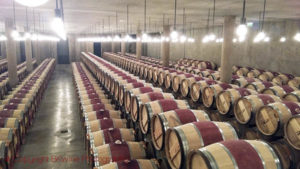 You will find all information about our wine tours for autumn 2017 and our South America and South Africa tours beginning of 2018 on bkwinetours.com. You can choose between France, Portugal, Italy, Argentina & Chile and South Africa. All destinations will give you a magnificent wine and food experience.
You will find all information about our wine tours for autumn 2017 and our South America and South Africa tours beginning of 2018 on bkwinetours.com. You can choose between France, Portugal, Italy, Argentina & Chile and South Africa. All destinations will give you a magnificent wine and food experience.
- Bordeaux, 27 September – 1 October
- Douro Valley in northern Portugal, 18-22 October
- Piedmont, Wine, Food and Truffles, October 18-22
- Alentejo and Setubal, Portugal, 25-29 October
- Argentina & Chile, 27 January – 11 February 2018
- South Africa, 23 February-5 March 2018
Detailed information on https://www.bkwinetours.com.
Lisbon and Evora, two magnificent places on the wine tour in Alentejo | wine tour
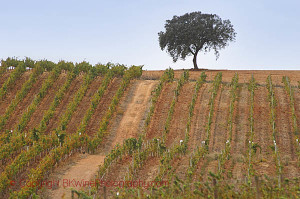 The wine tour to Alentejo begins in Lisbon. Portugal’s capital is located at the mouth of the river Tejo. It is a city built on hills, an exciting city where you will always find something unexpected. We stay the first and the last night in Lisbon. The other two nights we are in the much smaller city of Evora, in the middle of the Alentejo district. A smaller town but equally exciting. Here you walk among whitewashed houses in narrow alleys. You will find Roman remains and renaissance churches. In Evora, a variety of peoples and epochs have made their mark. Alentejo is actually Portugal’s biggest wine region, and perhaps the most modern. It is also the home of most of the cork oak forests. You will explore Evora in the evenings; the days are of course devoted to the wine and the wine producers. And, of course, to the food. You will taste many different Portuguese specialties; not least the delicious cured ham, which is as good (or better?) as the Spanish one.
The wine tour to Alentejo begins in Lisbon. Portugal’s capital is located at the mouth of the river Tejo. It is a city built on hills, an exciting city where you will always find something unexpected. We stay the first and the last night in Lisbon. The other two nights we are in the much smaller city of Evora, in the middle of the Alentejo district. A smaller town but equally exciting. Here you walk among whitewashed houses in narrow alleys. You will find Roman remains and renaissance churches. In Evora, a variety of peoples and epochs have made their mark. Alentejo is actually Portugal’s biggest wine region, and perhaps the most modern. It is also the home of most of the cork oak forests. You will explore Evora in the evenings; the days are of course devoted to the wine and the wine producers. And, of course, to the food. You will taste many different Portuguese specialties; not least the delicious cured ham, which is as good (or better?) as the Spanish one.
Discover Alentejo, the wines, the food and much more on our Alentejo and Setúbal wine tour 25 to 29 October.
Chile and Argentina, wine, gastronomy and nature in South America | wine tour
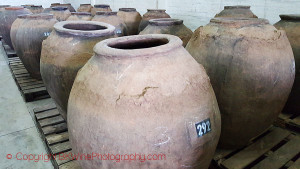 During two intense weeks, we visit the two major wine countries in South America, Argentina and Chile. Close to each other (as the crow flies) but in many ways very different. The journey to South America is packed with experiences. This is a wine tour that will be a memory for life. The wines, the food, the people and the landscape.
During two intense weeks, we visit the two major wine countries in South America, Argentina and Chile. Close to each other (as the crow flies) but in many ways very different. The journey to South America is packed with experiences. This is a wine tour that will be a memory for life. The wines, the food, the people and the landscape.
We will taste many wines, meet passionate winemakers and eat amazing lunches. The Argentinean meat is world famous. We will visit the mythical harbour town of Valparaiso. We will travel by bus over the Andes, the mighty mountain range. The border crossing between the two countries is at 3500 meters (11,500 feet). We start with tango in Buenos Aires and end in the modern city of Santiago de Chile. Read more on the wine tour to Chile and Argentina, January 27 to February 11, 2018.
You can see more of photos and videos from the tour on the Facebook group for the wine tour to Chile and Argentina.
South Africa: a new generation terroir wines, with sea and nature | wine tour
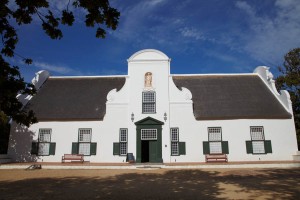 Our wine tour to South Africa starts at the end of February. It is still summer in South Africa, but not too hot. The harvest has just begun or has maybe been going on for a week or so. You will see many different harvesting activities. The picking in the vineyard, destemming, fermentation, pumping over, pigeage and other things in the winery.
Our wine tour to South Africa starts at the end of February. It is still summer in South Africa, but not too hot. The harvest has just begun or has maybe been going on for a week or so. You will see many different harvesting activities. The picking in the vineyard, destemming, fermentation, pumping over, pigeage and other things in the winery.
The tour begins in Cape Town and from there we continue to the wine regions. The distances are quite short so we will have time to see several of them: Walker Bay, Elgin, Stellenbosch, Franschhoek, Paarl. You will notice that a lot has happened in South Africa in recent years. Today there is a strong ambition to make terroir wines, quality wines with personality and character. Often great wines. Even if you have already enjoyed many a South African wine you will discover something new and exciting, new trends, a variety of styles. Read more on the wine tour to South Africa February 23 to March 5, 2018.
If you want to extend your holiday, we also offer an add-on after the wine tour with safari (really amazing!) and another before the wine tour with golf.
You can see plenty of pictures and videos from the tour on the Facebook group for the wine tour to South Africa 2017.
Don’t be an egoist! Share with your friends and other wine enthusiasts! Forward the Brief to your friends! Suggest that they sign up for a free subscription !
© Copyright BKWine








